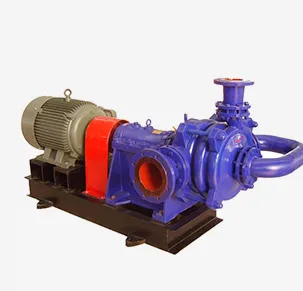English
- Afrikaans
- Albanian
- Amharic
- Arabic
- Armenian
- Azerbaijani
- Basque
- Belarusian
- Bengali
- Bosnian
- Bulgarian
- Catalan
- Cebuano
- Corsican
- Croatian
- Czech
- Danish
- Dutch
- English
- Esperanto
- Estonian
- Finnish
- French
- Frisian
- Galician
- Georgian
- German
- Greek
- Gujarati
- Haitian Creole
- hausa
- hawaiian
- Hebrew
- Hindi
- Miao
- Hungarian
- Icelandic
- igbo
- Indonesian
- irish
- Italian
- Japanese
- Javanese
- Kannada
- kazakh
- Khmer
- Rwandese
- Korean
- Kurdish
- Kyrgyz
- Lao
- Latin
- Latvian
- Lithuanian
- Luxembourgish
- Macedonian
- Malgashi
- Malay
- Malayalam
- Maltese
- Maori
- Marathi
- Mongolian
- Myanmar
- Nepali
- Norwegian
- Norwegian
- Occitan
- Pashto
- Persian
- Polish
- Portuguese
- Punjabi
- Romanian
- Russian
- Samoan
- Scottish Gaelic
- Serbian
- Sesotho
- Shona
- Sindhi
- Sinhala
- Slovak
- Slovenian
- Somali
- Spanish
- Sundanese
- Swahili
- Swedish
- Tagalog
- Tajik
- Tamil
- Tatar
- Telugu
- Thai
- Turkish
- Turkmen
- Ukrainian
- Urdu
- Uighur
- Uzbek
- Vietnamese
- Welsh
- Bantu
- Yiddish
- Yoruba
- Zulu
Telephone: +86 13120555503
Email: frank@cypump.com
Dec . 19, 2024 16:11 Back to list
slurry tank pump repair
Repairing Slurry Tank Pumps A Comprehensive Guide
Slurry tank pumps play a crucial role in various industries, including mining, wastewater treatment, and construction. These pumps are designed to handle thick, viscous mixtures of liquids and solids, often referred to as slurry. Over time, wear and tear can lead to decreased efficiency and even failure of these pumps. Proper maintenance and timely repairs are essential for ensuring optimal performance and prolonging the lifespan of slurry tank pumps. In this article, we’ll explore common issues, maintenance practices, and steps for effective repair of slurry tank pumps.
Understanding Slurry Tank Pumps
Slurry tank pumps are typically designed with robust materials to handle abrasive materials. They are categorized into several types, including submersible pumps, centrifugal pumps, and positive displacement pumps. Each type is suited to different applications based on the specific characteristics of the slurry being pumped, including viscosity, density, and particle size.
Common Issues
1. Cavitation This phenomenon occurs when there is a drop in pressure that leads to the formation of vapor bubbles within the pump. When these bubbles collapse, they can cause significant damage to the pump impeller and casing. Signs of cavitation include unusual noise, vibrations, and a drop in pumping efficiency.
2. Wear and Tear Due to the abrasive nature of the materials being pumped, wear on components such as impellers and casing is inevitable. Regular inspections can help identify wear early, preventing more significant damage.
3. Blockages Large particles can sometimes clog the pump or piping, leading to reduced flow rates or even complete failures. Implementing a regular cleaning schedule can help avert this issue.
4. Seal Failure The seals in slurry pumps are subject to extreme pressures and abrasive materials. A failing seal can lead to leaks, loss of prime, and environmental contamination.
Maintenance Practices
1. Regular Inspections Schedule routine inspections to check for signs of wear, leaks, and cavitation issues. This proactive approach can help identify problems before they escalate.
2. Cleaning Regularly clean the pump and associated piping to prevent blockages and the buildup of slurry materials. This is particularly important in high-debris environments.
slurry tank pump repair

3. Monitoring Operating Conditions Keep a close eye on flow rates, pressure, and temperature. Sudden changes in these parameters can indicate underlying issues that need to be addressed promptly.
4. Lubrication and Sealing Ensure that all moving parts are adequately lubricated, and seals are in good condition to prevent leaks and friction-related damage.
Steps for Effective Repair
1. Diagnosis When issues arise, the first step is to diagnose the problem accurately. Utilize monitoring tools and visual inspections to identify the cause of the failure.
2. Disassemble the Pump Carefully disassemble the pump while taking note of how each component fits together. This will make reassembly easier. Ensure that the pump is disconnected from any power source and drained of materials before beginning disassembly.
3. Inspect Components Examine each component for signs of wear, cracking, or damage. Pay particular attention to the impeller, casing, and seals. Replace any parts that are worn beyond acceptable limits.
4. Repair or Replace Depending on the extent of the damage, you may need to repair or replace certain components. Simple repairs, such as replacing seals or bearings, can often be done on-site, while complex issues might require specialized services.
5. Reassemble and Test After repairs are completed, carefully reassemble the pump, ensuring that all seals are properly placed and that there are no loose parts. Once reassembled, conduct a test run under controlled conditions to ensure that the pump operates smoothly and efficiently.
6. Document the Process Keep a detailed record of any repairs and maintenance activities. This documentation can be invaluable for future reference and helps in creating a scheduled maintenance plan.
Conclusion
Repairing slurry tank pumps requires a thorough understanding of their components and operating conditions. Regular maintenance, accurate diagnostics, and timely repairs can extend the life of these vital machines. By following the best practices outlined in this article, operators can enhance the efficiency and reliability of slurry tank pumps, ultimately contributing to smoother operations and reduced downtime.
-
ISG Series Vertical Pipeline Pump - Chi Yuan Pumps Co., LTD.
NewsJul.30,2025
-
ISG Series Vertical Pipeline Pump - Chi Yuan Pumps Co., LTD.|energy-efficient fluid handling&industrial durability
NewsJul.30,2025
-
ISG Series Vertical Pipeline Pump - Chi Yuan Pumps | Advanced Engineering&Industrial Efficiency
NewsJul.30,2025
-
ISG Series Pipeline Pump - Chi Yuan Pumps | High Efficiency, Energy Saving
NewsJul.30,2025
-
ISG Series Vertical Pipeline Pump-Chi Yuan Pumps|High Efficiency&Reliable Performance
NewsJul.29,2025
-
ISG Series Vertical Pipeline Pump|High Efficiency&Low Noise
NewsJul.29,2025










